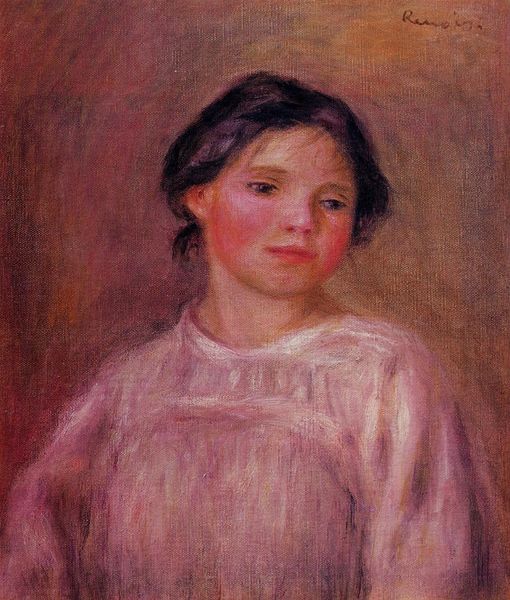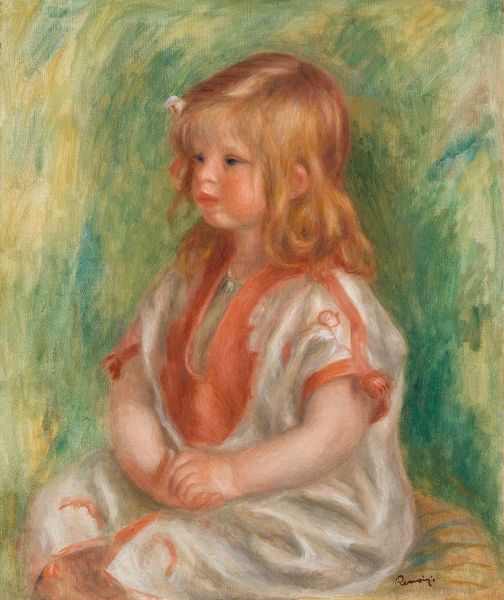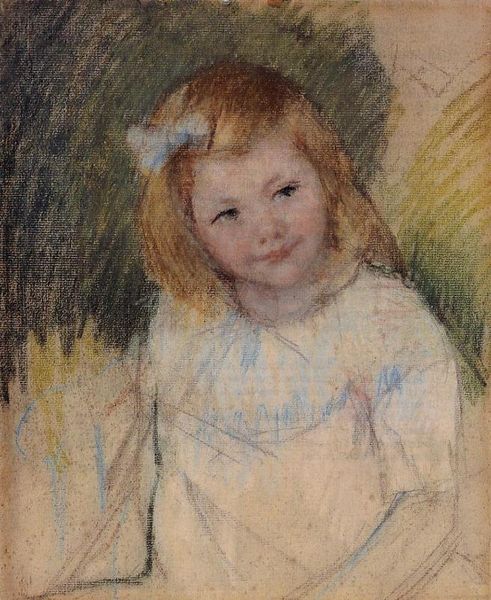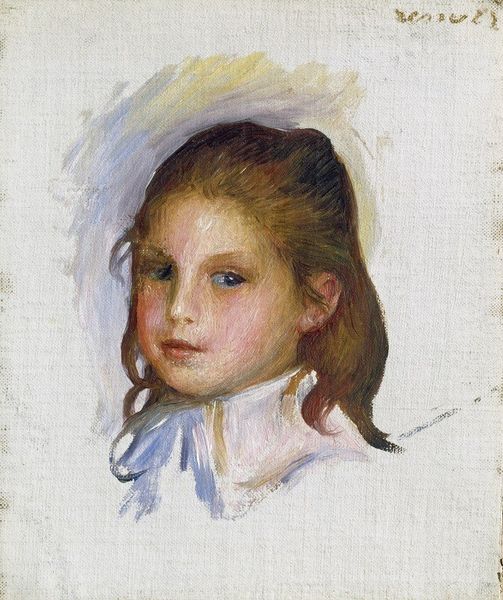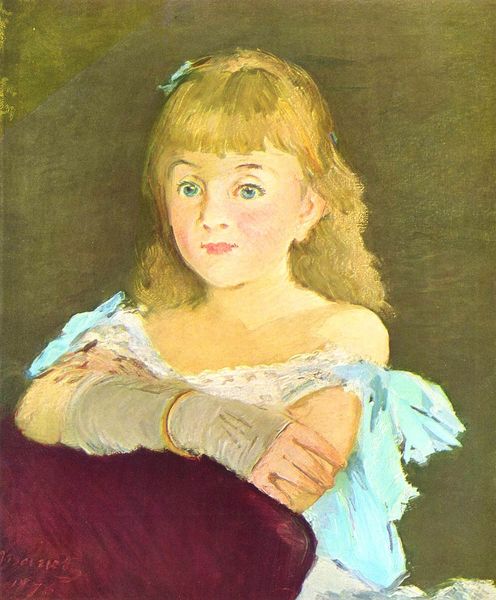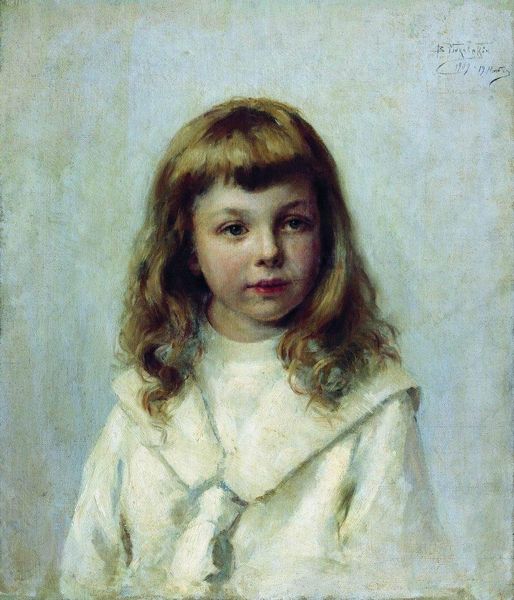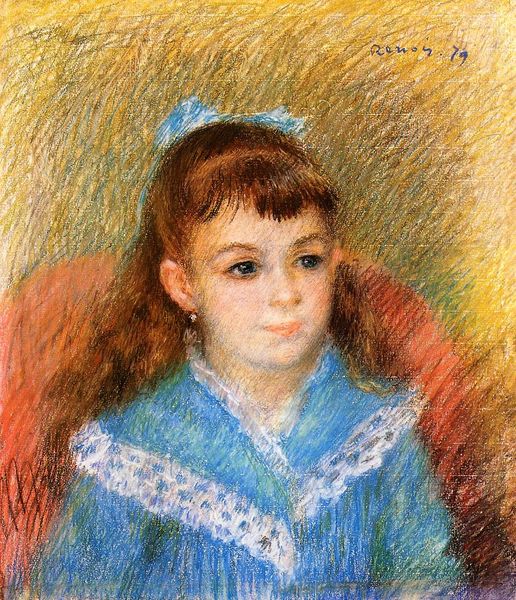
Dimensions: 60.3 x 50.2 cm
Copyright: Public domain
Editor: We’re looking at Mary Cassatt’s "Young Boy in Blue," created around 1906. The subject matter and technique of using pastel gives a lighthearted feel. How would you interpret the symbolism in this portrait? Curator: Well, let's not jump to conclusions! It’s titled "Young Boy in Blue," but is it definitively a boy? Blue, throughout art history, signifies spirituality, peace, and trust. Look at Renaissance Madonnas swathed in azure robes. But here, it feels…domestic, perhaps even wistful, a gentler virtue than outright power. What do you make of the figure’s gaze? Editor: It's averted, dreamy, internal. It's interesting that the androgynous quality adds a layer to it, since clothing socially identifies a gender, and the title tells us one thing. Are we supposed to doubt that reading? Curator: Indeed! And the open brushstrokes. They seem so intentional. Cassatt avoids photorealism, pushing this image into a world of feeling. Is it an assertion of independence against traditional notions of portraiture? It definitely breaks gender boundaries. Cassatt, as a female Impressionist, played with societal expectations, and that might be key here. The symbol of the individual experience! Editor: That's really fascinating; so it’s a commentary on how we read visual information but also a product of how she pushed gender stereotypes, too. Curator: Precisely! We have a window into a cultural moment grappling with gender identity and challenging norms, through seemingly simple pictorial conventions. Editor: This gives a completely fresh perspective! Now when I look at the artwork, I think about how it would feel for anyone who had different readings to see the symbols in the artwork. Curator: Wonderful, visual memory helps create cultural memory. Art evolves, and so do we, as its viewers.
Comments
No comments
Be the first to comment and join the conversation on the ultimate creative platform.


